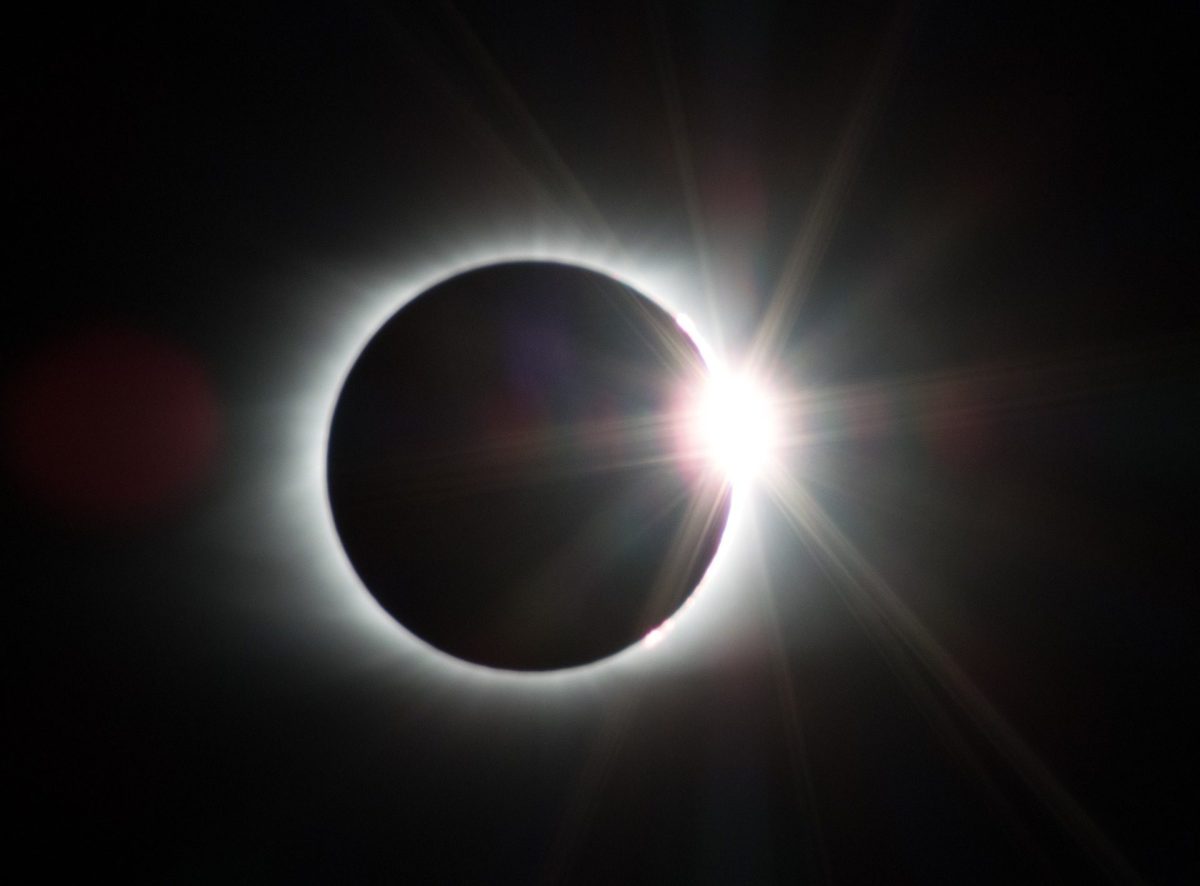If you have watched the news lately, you are aware that a total solar eclipse is expected to cross North America on April, 8th, 2024, passing over Mexico, then entering the United States in Texas and moving through Oklahoma, Arkansas, Missouri, Illinois, Kentucky, Indiana, Ohio, Pennsylvania, New York, Vermont, New Hampshire, and finally to Maine, along with limited areas over Tennessee and Michigan. It will then enter Canada in Southern Ontario, and continue passing through Quebec, New Brunswick, Prince Edward Island, and Cape Breton. While the eclipse will begin in Mexico at 11 AM, it is predicted to exit North America by 5:16 in the afternoon. Ohioans will be able to observe the eclipse, first partially and then totally, starting at 1:59 PM until around 4:29 in the afternoon.
The spectacularly captivating celestial phenomenon of the solar eclipse takes place when the moon is positioned in between the sun and earth, obscuring the sun fully, or partially, and casting a shadow on the earth. Even though the sun and moon seem similar in size to us on Earth, the sun is larger than the moon but much farther away. The relative position of the sun and moon to each other, as well as their distances from the Earth, play a role in the kind of solar eclipse that will take place. Solar eclipses fall under one of three categories: partial, annular, or complete. A partial solar eclipse is formed when the moon partially obstructs the sun, resulting in only a fraction of the sun remaining visible. Annular eclipses happen when the moon only covers the sun’s center, leaving a thick, bright, luminous ring around its edges. A total eclipse, on the other hand, happens when the moon completely covers the sun, plunging us into darkness at some point throughout the day. Usually, eclipses happen about twice a year, but because they are very minimal, they often don’t attract much attention.
Total eclipses are very rare since a precise alignment between the centers of the moon and the sun is required for an eclipse to be complete. To be able to experience a total solar eclipse, an observer must be in the moon’s full shadow, which is called the umbra and spans about 100 miles across. Anyone outside this 100-mile path will be in the penumbra, only experiencing a partial eclipse. Oftentimes, when the moon covers the sun entirely, the halo surrounding the sun becomes visible, setting up a truly mesmerizing and rare sight. Rarely, in the moments right before a total eclipse, a few bright spots will form around the moon’s edge that make it look like a huge diamond ring, which are referred to as Baily’s Beads. Once the moon covers the sun completely, the spots disappear, darkness takes over, and a drop in temperature can be felt.
Eclipse enthusiasts from all over the country have been planning for months to travel to the aforementioned states, where the solar eclipse is projected to be most visible. While the public is mostly advised to protect their eyes, there have been some warnings for people to stock up on food, medications, and fuel, because of the influx of tourists associated with the event. Some states, like our home state of Ohio, expect to experience upwards of 100,000 tourists, which might become more than what the locals can handle in terms of resources in case of accidents or emergencies. That is why, in states like Oklahoma, the police force and national guards have been called in to provide additional support if needed. Even though these rare total eclipses offer unparalleled majestic spectacles, viewers should be aware of the dangers of direct solar radiation, as staring into the sun during an eclipse can result in irreversible damage to the eyes, causing visual impairment or blindness. Indeed, it is of utmost importance for viewers to protect their vision by using certified solar eclipse viewing glasses with filters meant to shield the eyes from harmful radiation. These glasses are available for purchase from a variety of stores and can even be picked up from public libraries and many other organizations for free. While a solar eclipse offers a rare opportunity to witness nature’s grandeur, following safety guidelines allows us to participate in this event safely and cherish the experience in the future.













